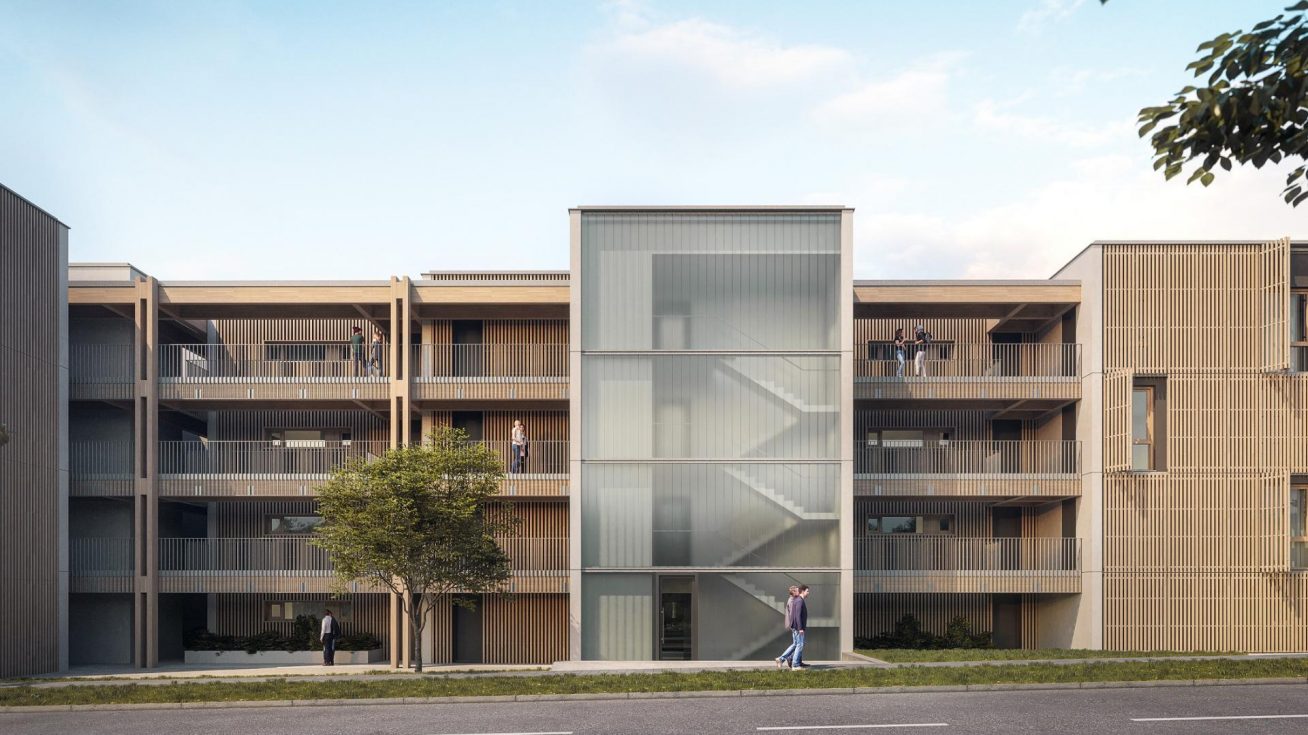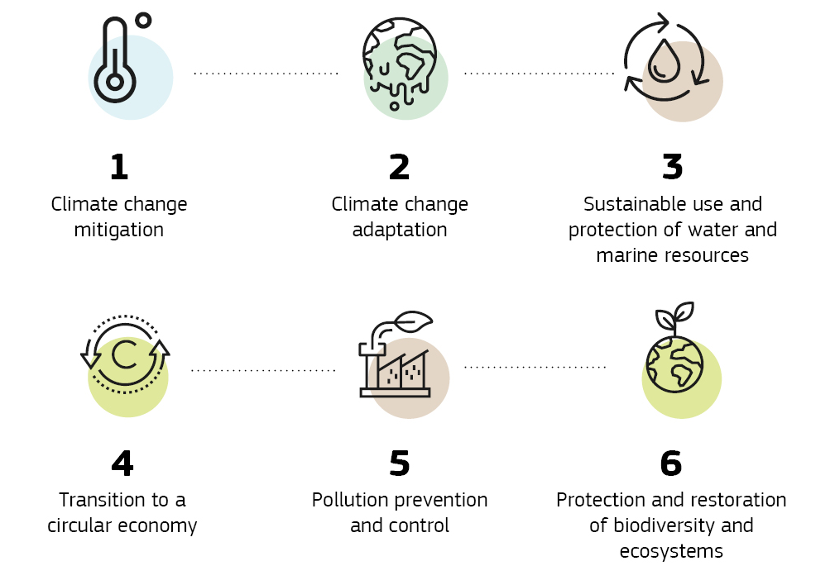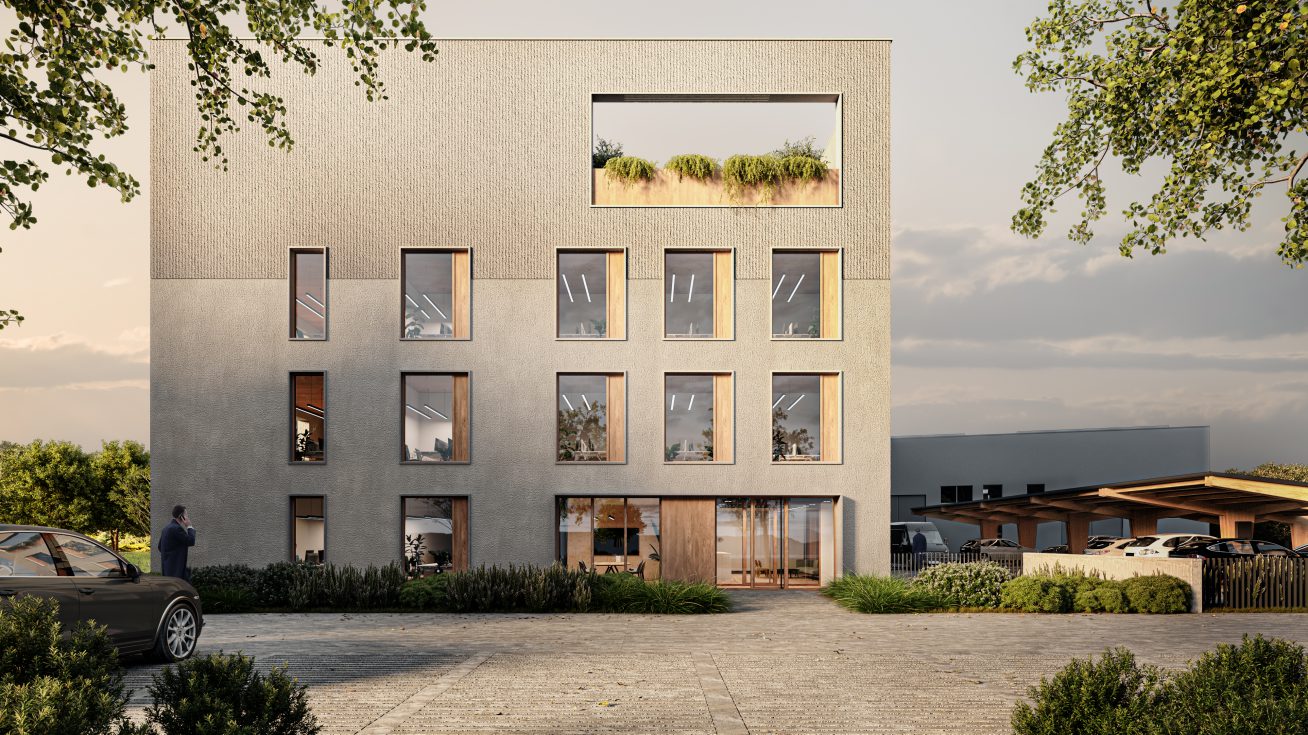
Timber buildings in the context of the EU taxonomy
In cooperation with the Rethink Architecture platform, we are publishing the second in a series of articles focusing on key aspects of timber buildings related to current legislation and business opportunities. The first article was about Timber Buildings in the context of ESG(link). You can read how wooden buildings fare in the context of the EU taxonomy in the following lines.
In its European Green Deal, the European Union aims to achieve climate neutrality by 2050 through economic growth that is not based on the increasing use of natural resources. In addition to reducingCO2 emissions to zero, the EU has also set a milestone as part of the “Fit for 55” legislative package, committing to reduce emissions by 55% by 2030 (compared to 1990). However, while the main success in Europe in recent decades has been in reducing emissions, dependence on the use of natural resources persists. For our society to meet this daunting challenge, it means that we need to change not only our technological processes, but also the lifestyle and priorities of our society as a whole. They are the ones that most influence the direction our economy is taking.
The Green Deal can be seen as an EU strategy whose ultimate goal is to transform the EU economy into a sustainable one. It is a set of recommendations and plans for “greening” all sectors of the economy. The EU Taxonomy is one of the 10 concrete actions of the EU Action Plan on Financing Sustainable Growth, which helps to meet the Green Deal objectives. Among other things, one of the objectives of the EU taxonomy is to prevent so-called “greenwashing”, i.e. the spread of misinformation about sustainability, by setting firm differentiation criteria for different economic sectors.
What is the EU taxonomy?
In general, the EU taxonomy is a comprehensive tool for transparency on sustainability and environmental impact. It can be understood as a system of criteria and standards to help determine how environmentally friendly an economic activity really is. In essence, it translates European climate commitments into specific economic activities. Deciding what is and is not “green” is not always clear-cut at first sight, and therefore The EU taxonomy is very important both for individual market players (e.g. banks) and for the public, as it gives a clear definition of what activities can be considered sustainable. In fact, it is a common language contributing to transparency and credibility of investments.
Six objectives, three conditions
The main pillars of the taxonomy are a set of 6 environmental commitments that assess whether economic activities meet environmental standards through detailed criteria. These objectives are.
- Climate change mitigation
- Adaptation to climate change
- Sustainable use and protection of water and marine resources
- Transition to a circular economy
- Protection and pollution control
- Protecting and restoring ecosystems and biodiversity
At the same time, the taxonomy sets out how to achieve these goals:
- Contribute to at least one of the 6 environmental objectives
- Do not cause damage to any of the other five
- Meet the minimum guarantees, i.e. to act well in other areas of business (not to be subject to corruption, not to use child labour, not to discriminate, etc.)
Taxonomy in the construction sector
As the construction sector accounts for around 40% of energy consumption and more than a third of allCO2 emissions, it is one of the key sectors for a successful transition to a low-carbon economy. The specific requirements are included in the framework of the so-called. technical screening criteria for individual taxonomy targets. Currently, these detailed criteria are issued for 2 objectives – climate change mitigation and adaptation to climate change. In the construction and real estate sector, these criteria apply to new construction, renovation and use of buildings. At the same time, they are also divided according to the size of the buildings. The technical screening criteria are defined in an open way and to some extent leave room for the selection of a suitable solution to meet them. Criteria that buildings must meet according to the taxonomy include low energy performance beyond near-zero energy building standards, use of construction and demolition waste, maximum flow rates of furnishings, and others. In the context of building materials, it is furthermore preferred that deconstruction and selective demolition are used to facilitate easier recycling of demolition waste. In addition, building design is preferred to make buildings more efficient, adaptable, flexible and demountable at the end of their life. Last but not least, the materials with which humans come into contact have strict limits on the amount of organic volatile substances used and emitted, which are harmful to health.
Timber buildings in the context of the EU taxonomy
The taxonomy shows that wooden buildings can contribute to multiple objectives. Wood is a renewable material that absorbsCO2 during its growth. Carbon is sequestered in the wood as the trees grow and remains embedded in the timber structure until the end of the structure’s lifetime, reducingCO2 emissions associated with construction compared to using other materials. Compared to conventional construction, timber construction provides up to 28% lower carbon footprint. In terms of the amount of carbon sequestered, 1m3 of wood absorbs 0.7-1 tonnes ofCO2 depending on the species. Thus, timber construction is fully in line with the first objective for climate change mitigation and the overall reduction of the carbon footprint of the construction industry.
The second objective, on adaptation, deals not only with physical but also with non-physical solutions. Among other things, wood contributes to natural humidity control in the interior, fosters creativity, lowers heart pressure and is visually appealing as a material. Timber building elements are mostly locally available, which reduces emissions produced by transport to the site.
The transition to a circular economy works with the entire life cycle of buildings. For wooden buildings, the possibility of deconstructing wooden elements and upcycling them into other elements such as wooden pallets or chipboard increases many times over. As an example, CLT panels contain a maximum of 10% adhesives when used as a load-bearing structure and can thus be recycled as a natural material. Even so, it is necessary to be aware of the amount of VOCs in adhesives, sealants and other materials. These substances are potential toxic, allergenic and carcinogenic hazards, they can have a negative effect on the human body and under normal conditions, once incorporated into the structure, they easily evaporate and pollute the indoor air.
Another objective of the taxonomy addresses the reduction of noise, dust and other pollution during construction or maintenance activities. Wood, with its prefabricability, lighter weight and on-site workability, is an ideal material for meeting this objective.
Mandatory calculation of the embedded carbon footprint of buildings?
The fact that timber is a cost-competitive and sustainable alternative for construction is also known abroad. In some countries, such as Denmark, the Netherlands, France and others, a calculation of the embodied carbon footprint of buildings is required in addition to an energy performance certificate when constructing new buildings and applying for a building permit. This legislative step is directly linked to the basic criteria for meeting the EU taxonomy. In the Czech context, it is therefore necessary to trigger a discussion on the benefits of wooden buildings for decarbonisation of the construction sector and to adjust the existing Czech legislation to bring it closer to our Nordic neighbours.
Taxonomy is not an obligation
Developers and other entities are not currently obliged to ensure that their projects comply with the EU taxonomy. However, European subsidies already give priority to projects that meet ESG parameters (we introduced the ESG issue in this article) and the criteria set by the taxonomy. Sustainable projects are also increasingly preferred by banks when applying for loans. Building according to the requirements of the taxonomy may thus be the preferred option for investors in many respects. Timber buildings in the context of the EU taxonomy will be one piece of the mosaic to meet these criteria.
Marie Magdaléna Brázdil is a sustainability specialist. At Rethink Architecture, he is working on sustainability in the built environment and the adaptation of human behaviour to different environments and climate change. He has extensive experience in managing teams and adapting to extreme conditions (USA, Europe, Arctic). He also actively promotes ocean conservation and organises marine expeditions to remote areas on the Serenity Explorers platform.
Karolína Barič is co-founder of Rethink Architecture, an organization that promotes sustainability in architecture among investors, architects and other professionals. She also co-founded ZERO Architecture, an architecture studio dedicated to sustainable building design and sustainability consulting in the construction industry. She is an accredited LEED, BREEAM and WELL certification specialist.



